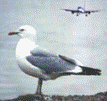Bird Strike Committee Proceedings
Date of this Version
August 2006
Abstract
Airports must eliminate or minimize bird and other wildlife attractants to maintain safe operating conditions. Unfortunately, all too often this is not the case. Outside pressure, political or economic decisions, and lack of awareness of appropriate management practices lead to many airports becoming safe havens for wildlife by accident or incredibly, by design. Airport tenants, airlines, or other users are often at the mercy of the airport operator or owner and believe they have little control over the situation where they operate. Proper habitat management is the basis for any wildlife or bird strike reduction program. Vegetation management is at the core of all successful programs. Turf management following FAA guidelines or DOD directives are clearly defined, but often ignored for various reasons including perceived savings, aesthetics, or confusing information regarding single-species preferences or unique specific sites. Wetlands mitigation projects are still conducted on airport sites despite recent new agreements between several federal agencies that specifically address the resolution of such issues. Agriculture is still practiced on many airfields despite FAA guidelines to the contrary. Threatened and endangered species are actively promoted on numerous airports due to perceived “requirements” levied by state and federal governments. We offer many examples of both habitat mismanagement and proper practices on airports from across the country. Recommendations and examples for treatment in a variety of situations are provided, including FAA and DOD requirements and guidelines for such situations.

